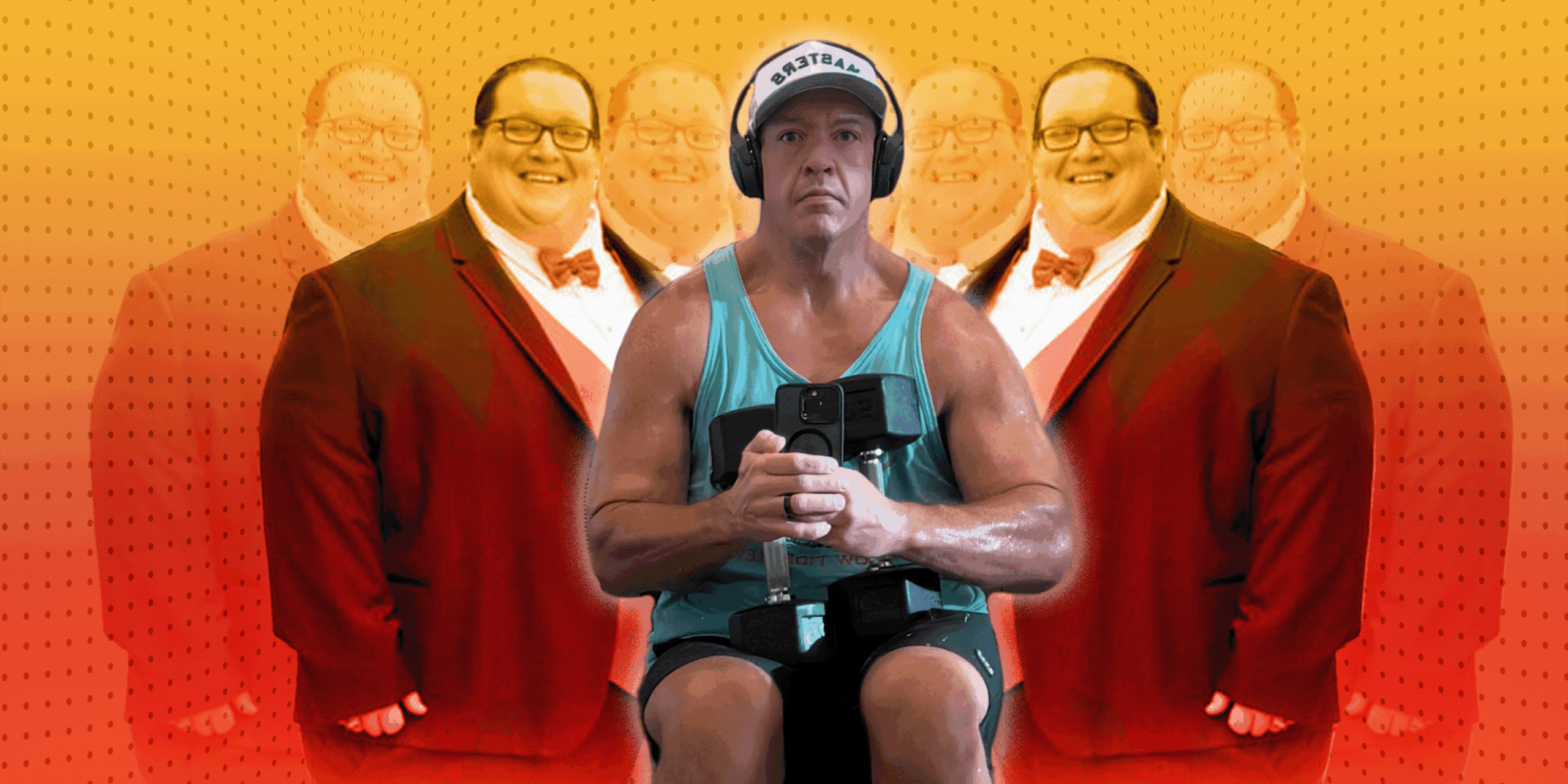Health
Athlete Transforms Life After Gaining 310 Pounds Post-Football

Charles O’Byrne, a former college football player, faced a significant transformation after his athletic career ended. Once celebrated for his strength on the field, he found himself grappling with weight gain that peaked at over 530 pounds. The turning point came not from a health scare, but from a moment of stark self-reflection in front of the mirror.
O’Byrne, who previously maintained a rigorous training schedule, experienced a loss of structure after leaving football. He describes himself as the “big guy” throughout his sports journey, but the absence of regular workouts led to a gradual increase in weight. By 2021, he had reached a point where he no longer recognized the extent of his transformation. “Damn. You have been so lucky—you’re alive! But you’re killing yourself. Today is the day this ends,” he recalls thinking.
This moment sparked a commitment to change. O’Byrne made a simple yet powerful promise to himself: “I can do this for one day.” He repeated this mantra daily, setting the stage for his weight loss journey.
Calculating a Path to Health
O’Byrne began by meticulously tracking his calorie intake, understanding that one pound of fat equals 3,500 calories. His approach involved creating a significant calorie deficit without resorting to surgery or weight loss drugs. For nearly three years, he recorded every calorie, even estimating the calories in a teaspoon of soup.
He eliminated cooking oils, focused on lean proteins, and embraced a variety of vegetables. One of his go-to meals included a bed of spinach topped with shrimp, taco powder, onions, salsa, and non-fat Greek yogurt, totaling just 220 calories. As he progressed, his diet shifted to include higher protein and healthy fats, while continuing to prioritize vegetables.
Rebuilding Strength and Discipline
Alongside dietary changes, O’Byrne returned to the gym, engaging in two daily workouts on a stationary bike and focusing on upper body exercises. Despite his previous strength—he once squatted 650 pounds and bench-pressed 350 pounds—he faced the reality of his new fitness level. Acceptance was key to his journey; he embraced his current physical state and worked diligently toward rebuilding his muscle mass.
Over approximately two and a half years, O’Byrne successfully lost around 310 pounds. The journey taught him invaluable lessons about self-discipline and resilience. He highlights the importance of making small, consistent decisions that ultimately lead to substantial change.
Today, at 40 years old, O’Byrne resides in Charleston, South Carolina, where he serves as the head of partnerships for a logistics AI company. His personal life flourished alongside his health journey; he met his wife near the end of this transformation, who became a significant source of motivation.
O’Byrne initially kept his experience private, viewing it as deeply personal. However, encouragement from his wife and close friends led him to share his story. His goal is not to seek attention but to inspire hope in others who may feel overwhelmed by their circumstances.
He emphasizes that change begins with a single day of commitment. “If you can do something for one day, chances are you can do it for a second day,” he encourages, underscoring that every journey starts with a simple step forward.
-

 Technology5 months ago
Technology5 months agoDiscover the Top 10 Calorie Counting Apps of 2025
-

 Technology3 weeks ago
Technology3 weeks agoOpenAI to Implement Age Verification for ChatGPT by December 2025
-

 Health3 months ago
Health3 months agoBella Hadid Shares Health Update After Treatment for Lyme Disease
-

 Health3 months ago
Health3 months agoAnalysts Project Stronger Growth for Apple’s iPhone 17 Lineup
-

 Health3 months ago
Health3 months agoErin Bates Shares Recovery Update Following Sepsis Complications
-

 Technology5 months ago
Technology5 months agoDiscover How to Reverse Image Search Using ChatGPT Effortlessly
-

 Technology3 months ago
Technology3 months agoElectric Moto Influencer Surronster Arrested in Tijuana
-

 Technology2 months ago
Technology2 months agoDiscover 2025’s Top GPUs for Exceptional 4K Gaming Performance
-

 Technology5 months ago
Technology5 months agoMeta Initiates $60B AI Data Center Expansion, Starting in Ohio
-

 Technology5 months ago
Technology5 months agoRecovering a Suspended TikTok Account: A Step-by-Step Guide
-

 Health5 months ago
Health5 months agoTested: Rab Firewall Mountain Jacket Survives Harsh Conditions
-

 Lifestyle5 months ago
Lifestyle5 months agoBelton Family Reunites After Daughter Survives Hill Country Floods









